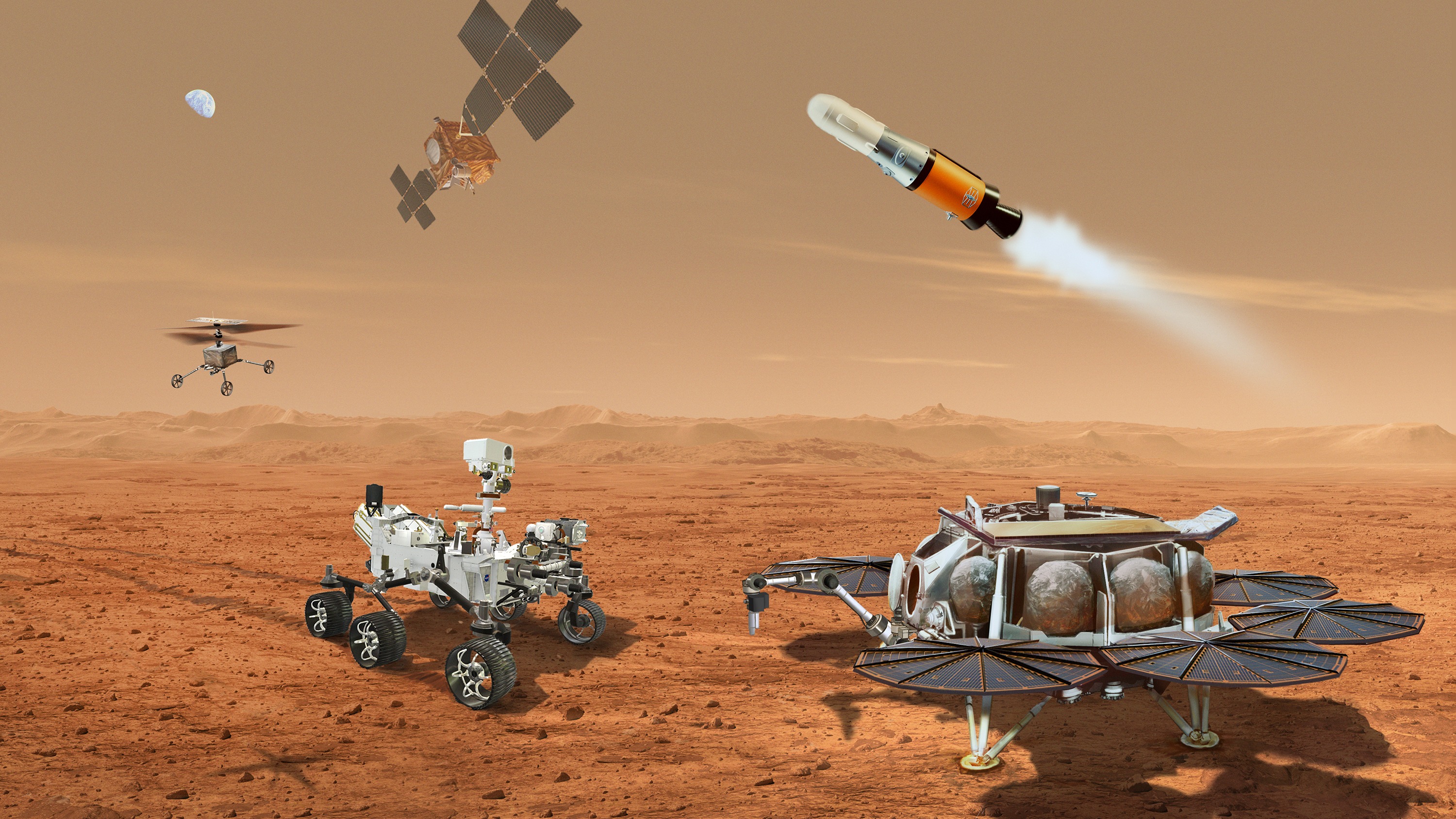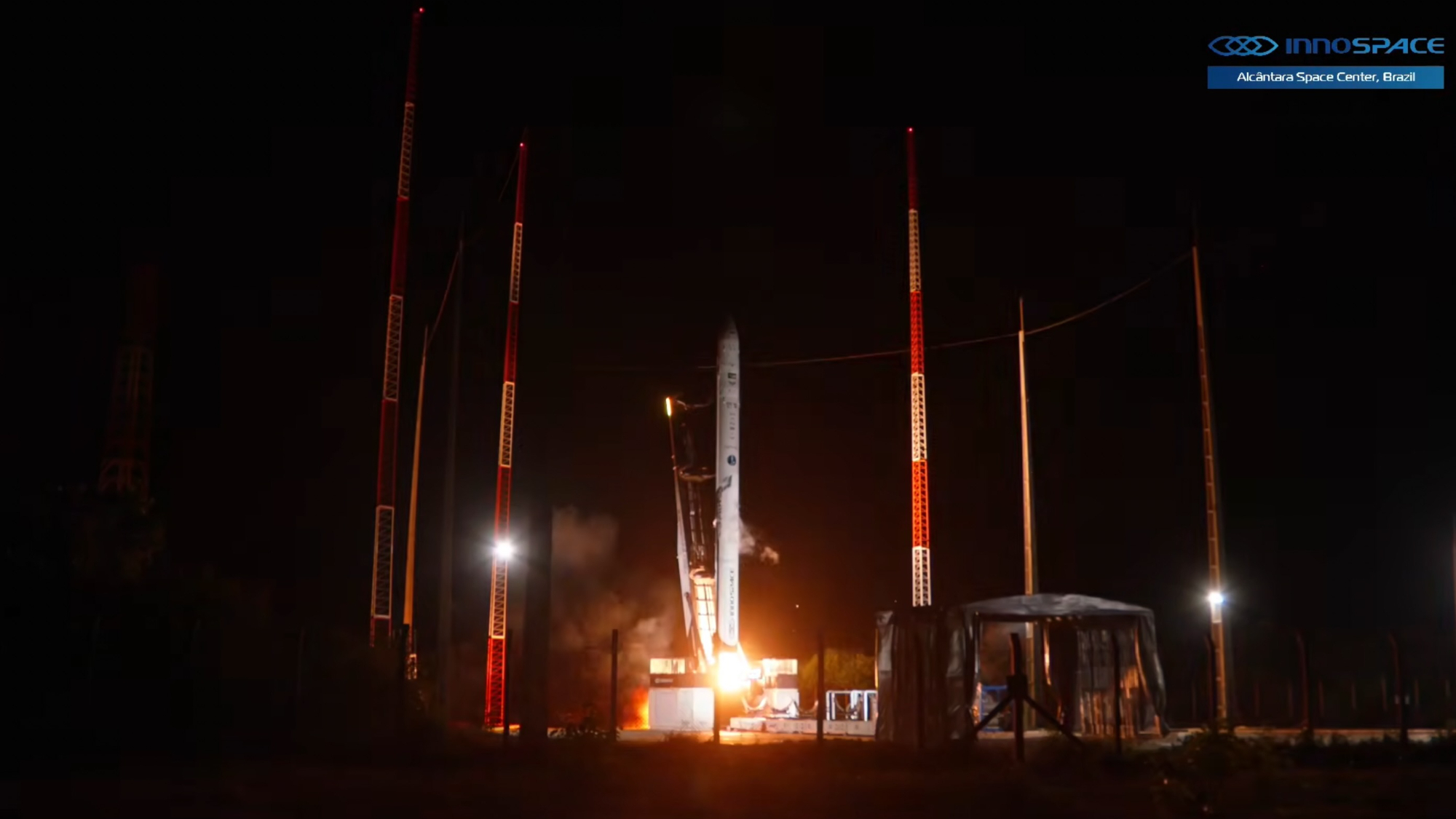Can Rocket Lab come to NASA's rescue with new Mars sample-return plan?
The precious Mars samples collected by the Perseverance rover could be coming to Earth sooner rather than later.

NASA's troubled Mars sample-return program may have a new lifeline, in the form of a proposal from private space company Rocket Lab to help save the mission.
When the Perseverance rover landed on Mars in 2021, the plan was to follow up with a mission in the early 2030s that would retrieve the canisters containing samples of Martian dirt, rocks and atmosphere collected by the rover, and bring them to Earth for detailed study. The hope is that the samples will be able to tell researchers about conditions on Mars billions of years ago, and possibly whether the planet has ever supported life.
However, while Perseverance has been happily trundling along on the surface of Mars collecting samples from and around an ancient river delta in Jezero Crater, NASA's plans for a sample-return mission, in conjunction with the European Space Agency, have hit some snags.
Deemed to have had "unrealistic budget and schedule expectations from the beginning," by an Independent Review Board, the costs of NASA's Mars sample-return plans have spiraled from $7 billion to $11 billion, which would be more than the James Webb Space Telescope, which itself went massively over budget. With cuts to NASA's budget resulting in the early 2030s timeline being shunted back to 2040, a situation that the planetary science community and NASA consider unacceptable, NASA began looking for a new solution.
Related: Perseverance rover's Mars samples must be brought back to Earth, scientists stress
So, in April, the agency asked for help, soliciting ideas from anyone who might have a faster, better and cheaper way of retrieving those precious samples. NASA ended up awarding contracts to 10 proposals, funding 90-day studies into their designs — and now California-based Rocket Lab has been selected to take its proposal further.
NASA's original sample-return plan was highly ambitious, involving three separate spacecraft. First, a lander would touch down within 200 feet (60 meters) of Perseverance in Jezero Crater. The lander would deploy two helicopters, similar in design to NASA's successful Ingenuity Mars helicopter, which would fly over to the rover, extract the samples and fly them back to the lander. The lander would then use a robotic arm to load the sample canisters into the Mars Ascent Vehicle, a two-stage rocket that would fly to Mars with the lander. Once loaded up, the rocket would be catapulted 16 feet (4.5 m) above the lander before igniting its engine so as not to damage the lander. The ascent vehicle would then rendezvous with a third spacecraft, a return orbiter, docking with it so that it could be brought back to Earth.
Breaking space news, the latest updates on rocket launches, skywatching events and more!
While the European Space Agency's return orbiter is on track, the complexity of NASA's lander, helicopter and ascent vehicle plan has gotten the better of the space agency. But Rocket Lab has the opportunity to potentially help save the mission, having been awarded a contract by NASA to develop its proposal to simplify the mission architecture and speed up the timeline within which the samples can be recovered.
"Retrieving samples from Mars is one of the most ambitious and scientifically important endeavors humanity has ever embarked upon," Rocket Lab founder and CEO Peter Beck said in a statement.
Rocket Lab is keeping tight-lipped about the exact nature of its proposal until the design study has been completed — there's no guarantee that NASA will actually decide to go ahead with it — but the company does have some pedigree in interplanetary missions. NASA's forthcoming ESCAPADE (Escape and Plasma Acceleration and Dynamics Explorers) mission to study how the solar wind interacts with Mars' residual magnetic field and atmosphere features twin spacecraft built by Rocket Lab. Meanwhile, Rocket Lab also provided the cubesat spacecraft for NASA's CAPSTONE (Cislunar Autonomous Position System Technology Operations and Navigation Experiment) mission to test the stability of the orbit around the moon that the agency's proposed Lunar Gateway space station will inhabit. However, the Martian sample-return mission would be by far the most complex project the company has ever attempted.
Nonetheless, Beck is confident in his company's ability to solve this problem for NASA. "Rocket Lab has been methodically implementing a strategy for cost-effective planetary science in recent years, making us uniquely suited to deliver a low-cost, rapid Mars Sample Return," he said. "We look forward to bringing our proven capabilities together to deliver a compelling, innovative mission solution that puts Mars rocks in the hands of scientists sooner."

Keith Cooper is a freelance science journalist and editor in the United Kingdom, and has a degree in physics and astrophysics from the University of Manchester. He's the author of "The Contact Paradox: Challenging Our Assumptions in the Search for Extraterrestrial Intelligence" (Bloomsbury Sigma, 2020) and has written articles on astronomy, space, physics and astrobiology for a multitude of magazines and websites.
